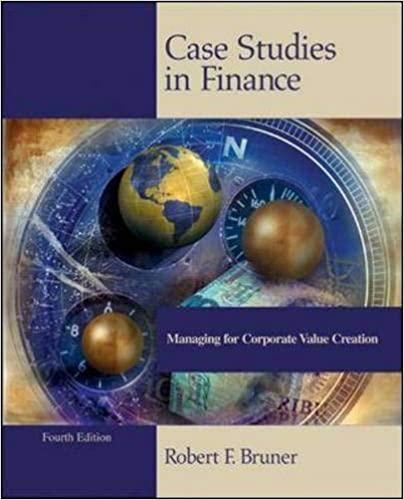Question 28 -- /3 Firm A has an equity (Stockholder's Equity) valued at $ 6 trillion, a debt of $ 4 trillions. The market has valued the shares of the signs at $ 75 per share. The firm has a total of 100 million shares circulating in the market and $ 4 trillion of debt. The market value of the while the value in the signature is books is from A. 10.0 billion, 11.5 billion 2 B. 11.5 million, 10.0 million 3 C. 11.5 billion, 10.0 billion 4 D. 10.0 million, 11.5 million 5 E. 10.0 billion, 7.5 million Question 35 --/2 Generally speaking, what changes as you move up and down on the side of the current assets of the balance sheet (Balance Sheet)?: A. assets are fully depreciated 2 B. assets increase in value 3 C. assets must be discarded D. assets are becoming 4 less fluids 5 E. the a and c Question 36 --/3 Jason Traders has sales of $ 833,587, a gross profit margin of 32.4%, and inventory of $ 178,435. What is the inventory turnover ratio for the firm? 1 A. 4.67x 2 B. 3.15x 3 C.4.1x 4 D. 6.55x 5 E. 8.33x Question 37 --/2 The situation sheet ("Balance Sheet") is the state financial showing the value of assets and liabilities + shareholders' equity (stocholder's equity) of the firm in a period, specifically during the fiscal year that reports the company. A. true 2 B. false Question 41 --/3 The Net Profit Margin for N&P Industries is: (Data: Sales = $ 160,000,000; profit operating (EBIT) = $ 17,000,000 and Net Income = $ 5,450,000) A. 7.84% 2 B. 2.66 3 C. 0.87% 4 D. 3.41% 5 E.0.341 Question 42 --/3 The operating profit marging for N&P Industries is: (Data: Sales = $ 160,000,000; profit operating (EBIT) = $ 17,000,000 and Net Income $ 5,450,000) A. 2.3998 2 B. 3.40% 3 C. 10.63% 4 D. 9.41% 5 E. 0.941 Question 43 --/2 One of the causes for the difference between earnings and cash flows is: A. that the cost of capital in fixed assets is depreciated in the long run 2 B. the company's credit sales 3 C. intangible assets 4 D. A and B E. none of the above Question 45 --/1 The simplest and cheapest form of business that can be established in United States and Port Rico is: General Society 2 Limited society 3 Sole Proprietorship 4 Corporation C Question 46 --/1 The difference between current ratio and quick ratio is that accounts receivable have been subtracted from assets currents. 1 True False Which of the following statements is correct? A. the lower the debt level of the firm, the greater the risk of default B. the lower the debt level of the signature, the lower the equity multiplier C. the lower the debt level of 3 the firm, the higher the equity multiplier D. the lower the debt level of the signature, the higher the tax amount corporate to pay 4 5 E. all are wrong For a firm whose operation depends more on short-term loans than long-term financing term, is of utmost importance, both for managers and creditors, follow more than close the that the A. debt indicators (debt 1 ratios) - liquidity indicators B. profitability indicators 2 efficiency indicators C. efficiency indicators - performance indicators 3 sustained growth D. liquidity indicators 4 of indebtedness (debt ratios) indicators E. liquidity indicators - indicators of 5 market value Working capital management policies involve: determine the proper amount and mix of current assets determine appropriate funding for current assets determine appropriate funding for 3 the assets and liabilities of the company 4 all the above are correct 5 A and B are correct According to the DuPont analysis, ROE is also you can calculate as: A. ROA X Net Profit Margin x Total 1 Assets Turnover B. ROA x Net Profit Margin X 2 Equity Multiplier C. Net Profit Margin x Total Assets Turnover 3 x Equity Multiplier D. Net Profit Margin x Total Assets Turnover 4 x Debt Ratio 5 E. ROA x Total Assets Turnover x Debt Ratio



















